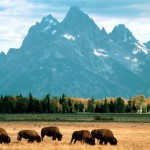Uranium A Common Mineral in Wyoming
Pumpkin Buttes and Uranium Fever, Wyoming’s Cultural Geology Guide when 1951 Prospectors Arrived
Uranium Deposits in the Powder River Basin in Wyoming
Pumpkin Buttes are located in the Powder River Basin of Wyoming. They contain uranium created from the ash of volcanic eruptions some 50 million years ago. This is the site where in 1951 J.D. Love first discovered uranium in a Wyoming sedimentary basin. Love’s discovery led to uranium fever: Prospectors and ranchers postured for potential stakes. What historian T.A. Larson calls “the complex pattern of rights to land and minerals” in Wyoming led to confusion in all directions. See the latest video on Pumpkin Buttes, a program of the Wyoming Cultural Geology Guide.
WYO-DOG Geology in Wyoming Database
The Wyoming Database of Geology (Wyo-Dog) was created to catalogue samples for this study as well as other mineral investigations. Geologists can use this database to querry sites for further exploration. One query of the database indicated that samples containing at least five times the average crustal abundance of REEs (a measurement suggestive of economic REEs) showed 20 sites in Wyoming at or above this amount. The database includes all elemental analyses along with brief write-ups and photographs of most samples and sites. The WSGS is in the process of creating a website version of this database for the public to access.


